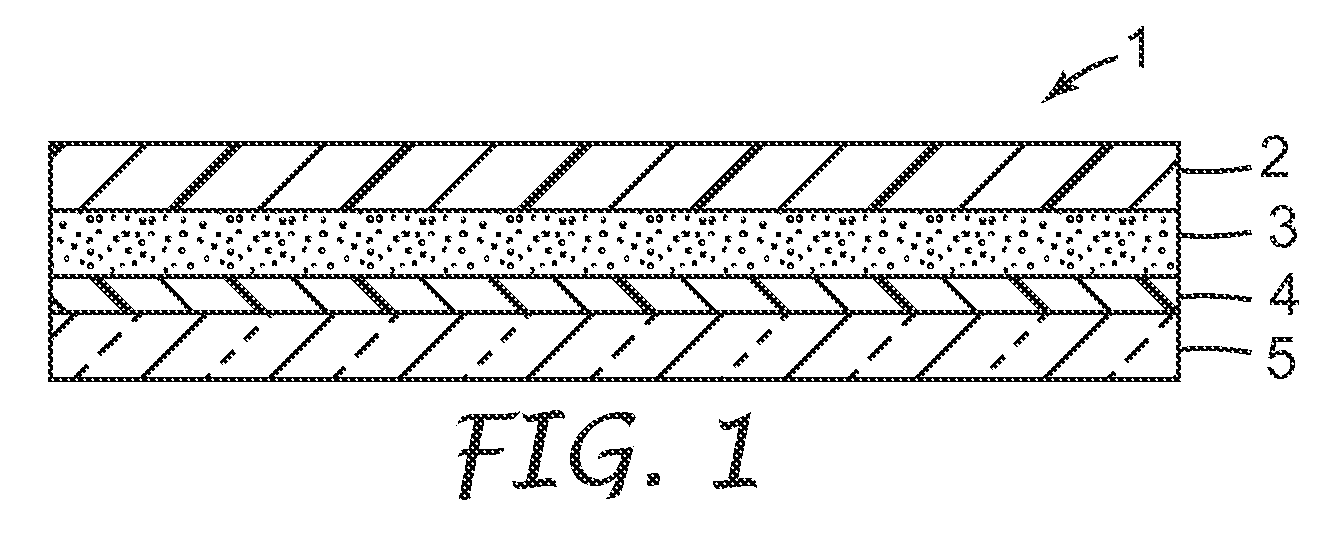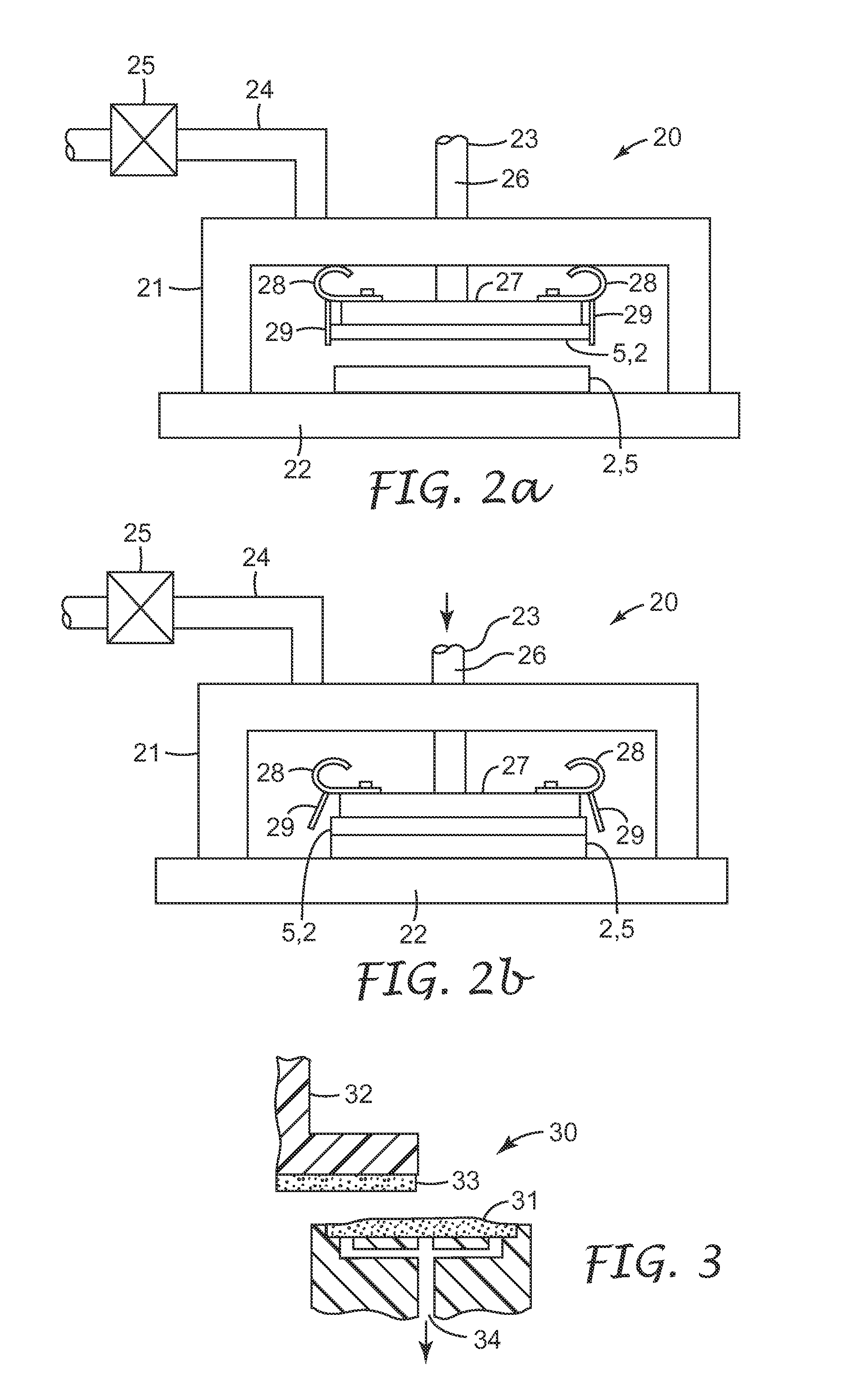Layered body and method for manufacturing thin substrate using the layered body
a technology of layered body and thin substrate, which is applied in the direction of film/foil adhesive primer layers, film/foil adhesives, synthetic resin layered products, etc., can solve the problems of inability to separate wafers, method has not yet achieved remarkable improvement over the present level of wafer thickness, etc., to reduce thickness substrate, reduce pressure, and prevent bubbles and dust contamination
- Summary
- Abstract
- Description
- Claims
- Application Information
AI Technical Summary
Benefits of technology
Problems solved by technology
Method used
Image
Examples
examples
[0089]These examples are for illustrative purposes only and are not meant to be limiting on the scope of the claims. All parts, percentages, ratios, etc. in the examples and the rest of the specification are by weight, unless noted otherwise.
[0090]Table 1 shows the formulation components and trade names that were used in the following examples. The following formulation components do not constitute an exclusive list, but should be interpreted only in light of the comparative examples for which they were used. Those skilled in the art will understand other formulation components may also correspond to a reasonable interpretation of the claims.
Heat Aged Adhesion Testing
[0091]Samples for adhesion testing are prepared by coating an approximately 250 micrometer thick layer of the adhesive formulation between a silicon wafer and a polyester release liner using a standard notch bar coater. The adhesive coating was passed three times under a Fusion “D” bulb set on low power. The conveyer sp...
PUM
| Property | Measurement | Unit |
|---|---|---|
| Fraction | aaaaa | aaaaa |
| Fraction | aaaaa | aaaaa |
| Percent by mass | aaaaa | aaaaa |
Abstract
Description
Claims
Application Information
 Login to View More
Login to View More - R&D
- Intellectual Property
- Life Sciences
- Materials
- Tech Scout
- Unparalleled Data Quality
- Higher Quality Content
- 60% Fewer Hallucinations
Browse by: Latest US Patents, China's latest patents, Technical Efficacy Thesaurus, Application Domain, Technology Topic, Popular Technical Reports.
© 2025 PatSnap. All rights reserved.Legal|Privacy policy|Modern Slavery Act Transparency Statement|Sitemap|About US| Contact US: help@patsnap.com



